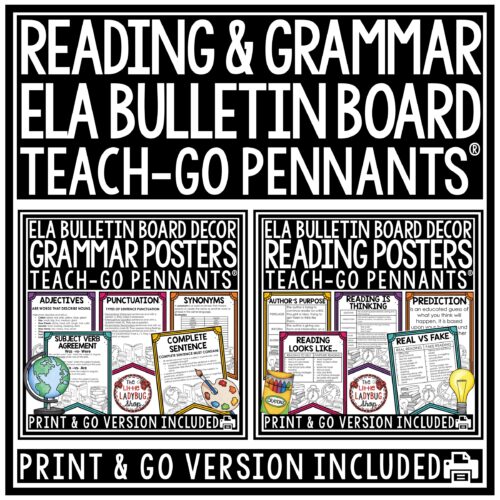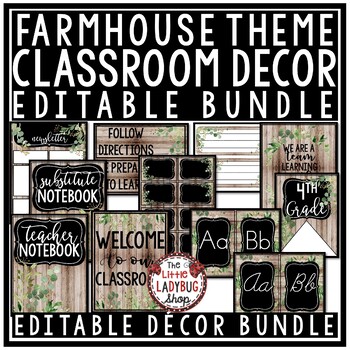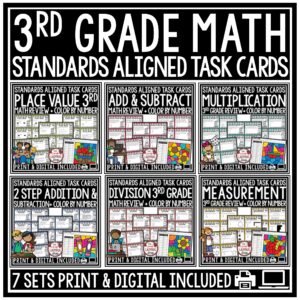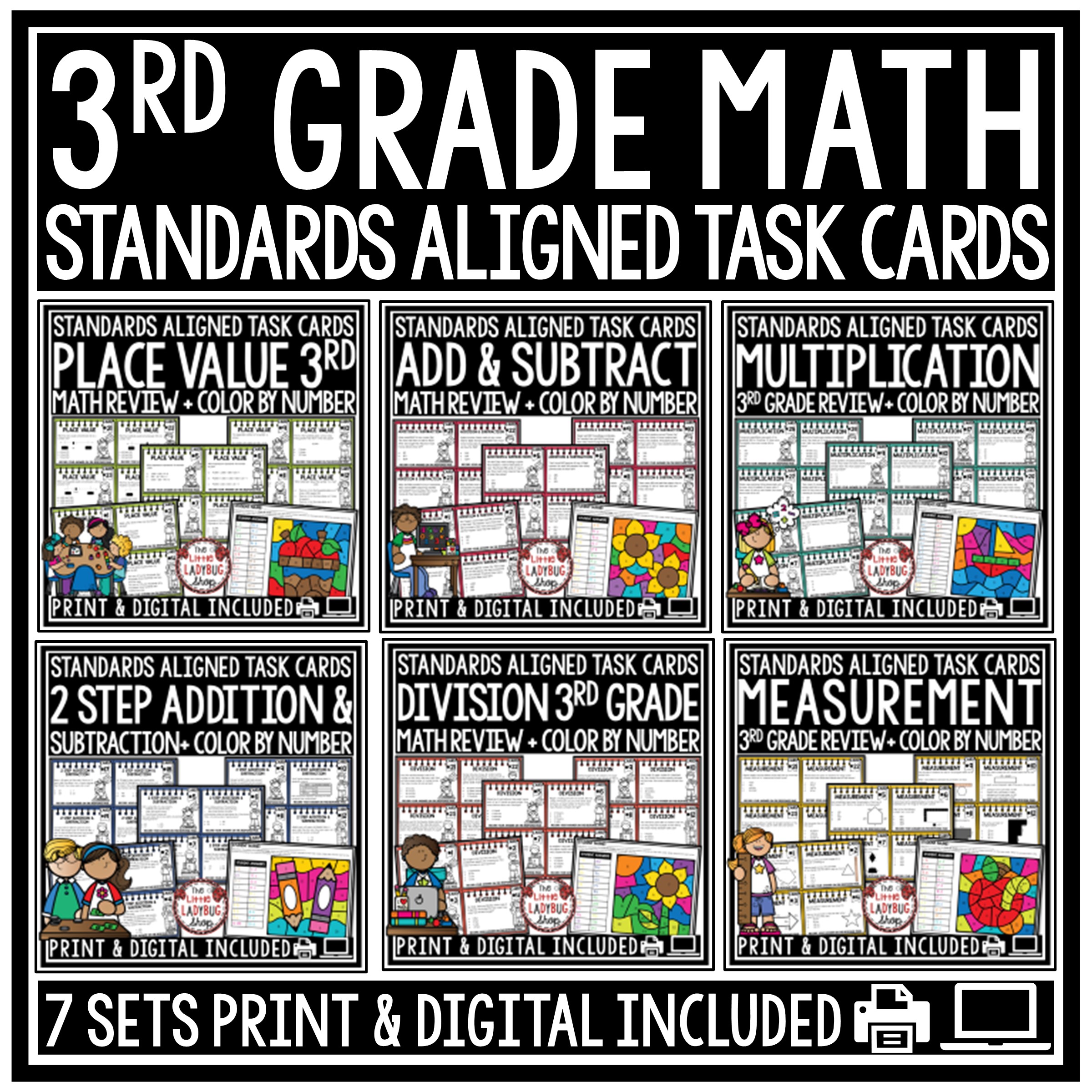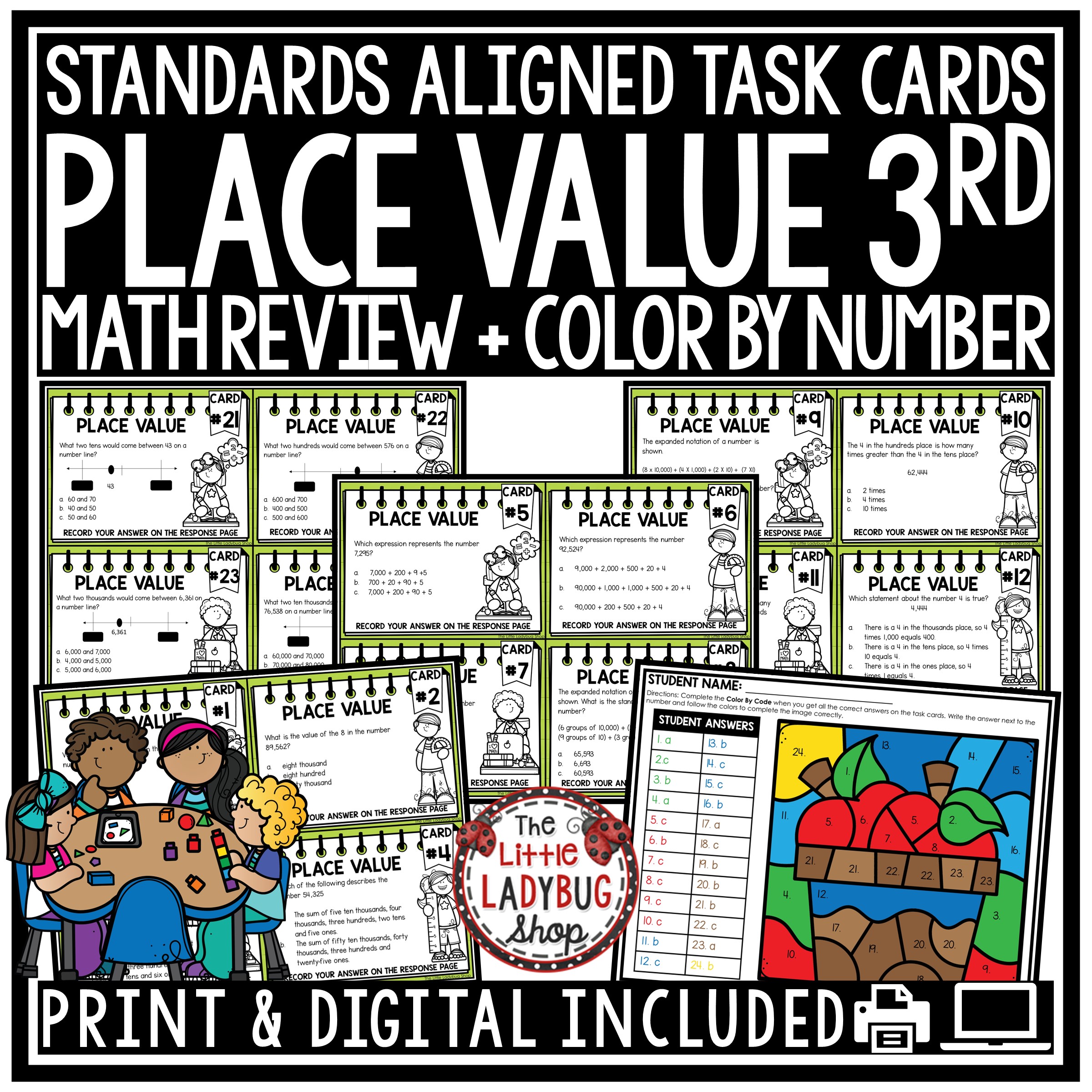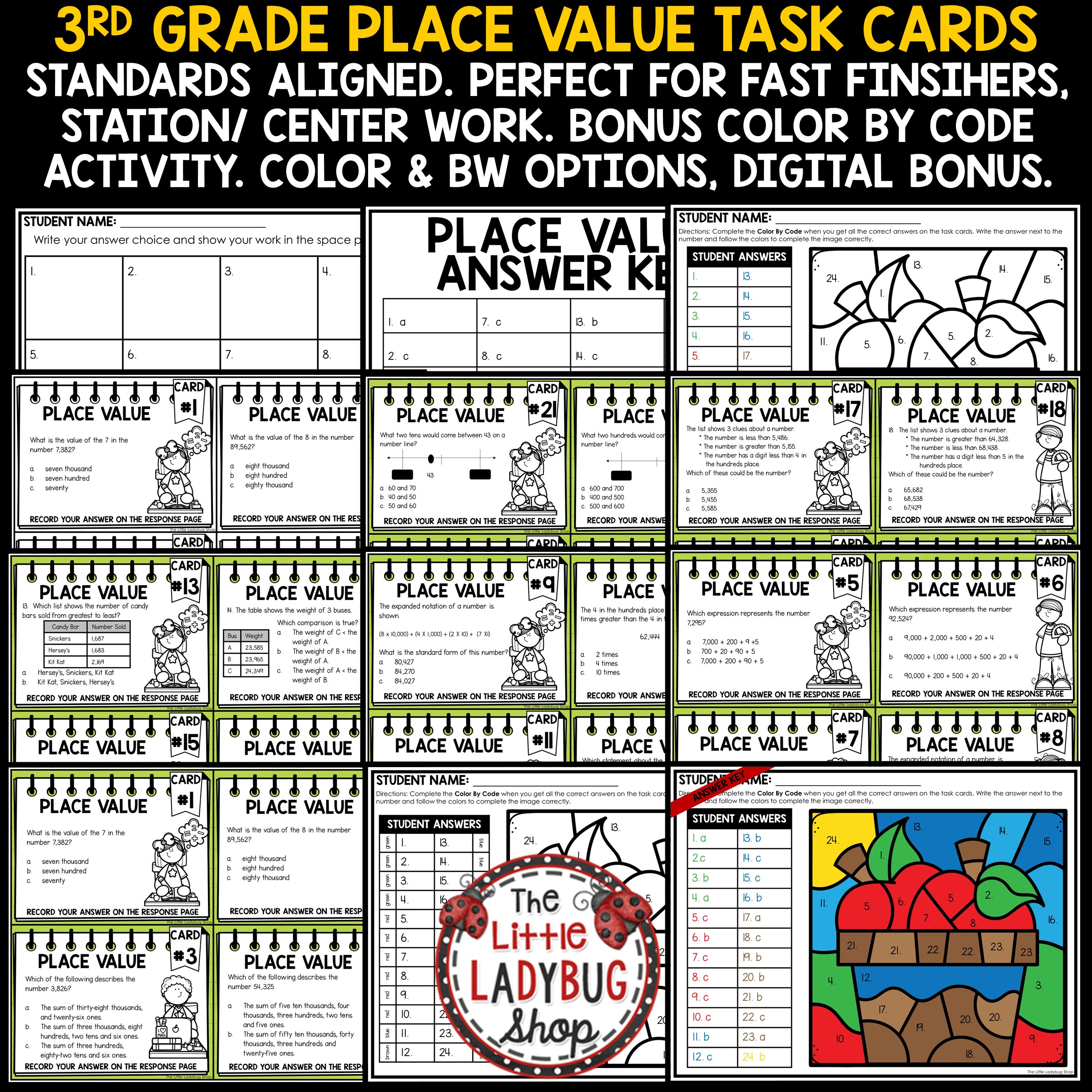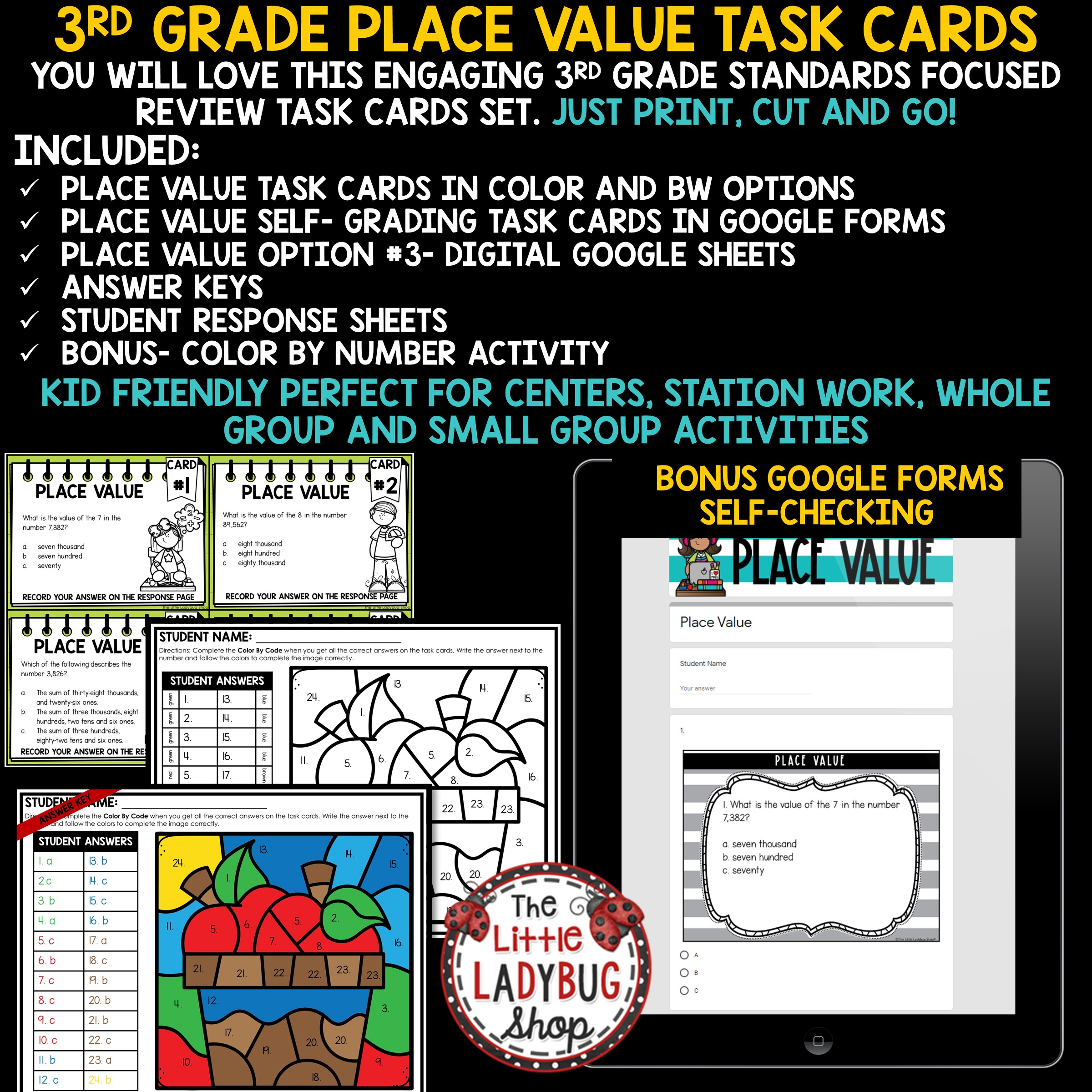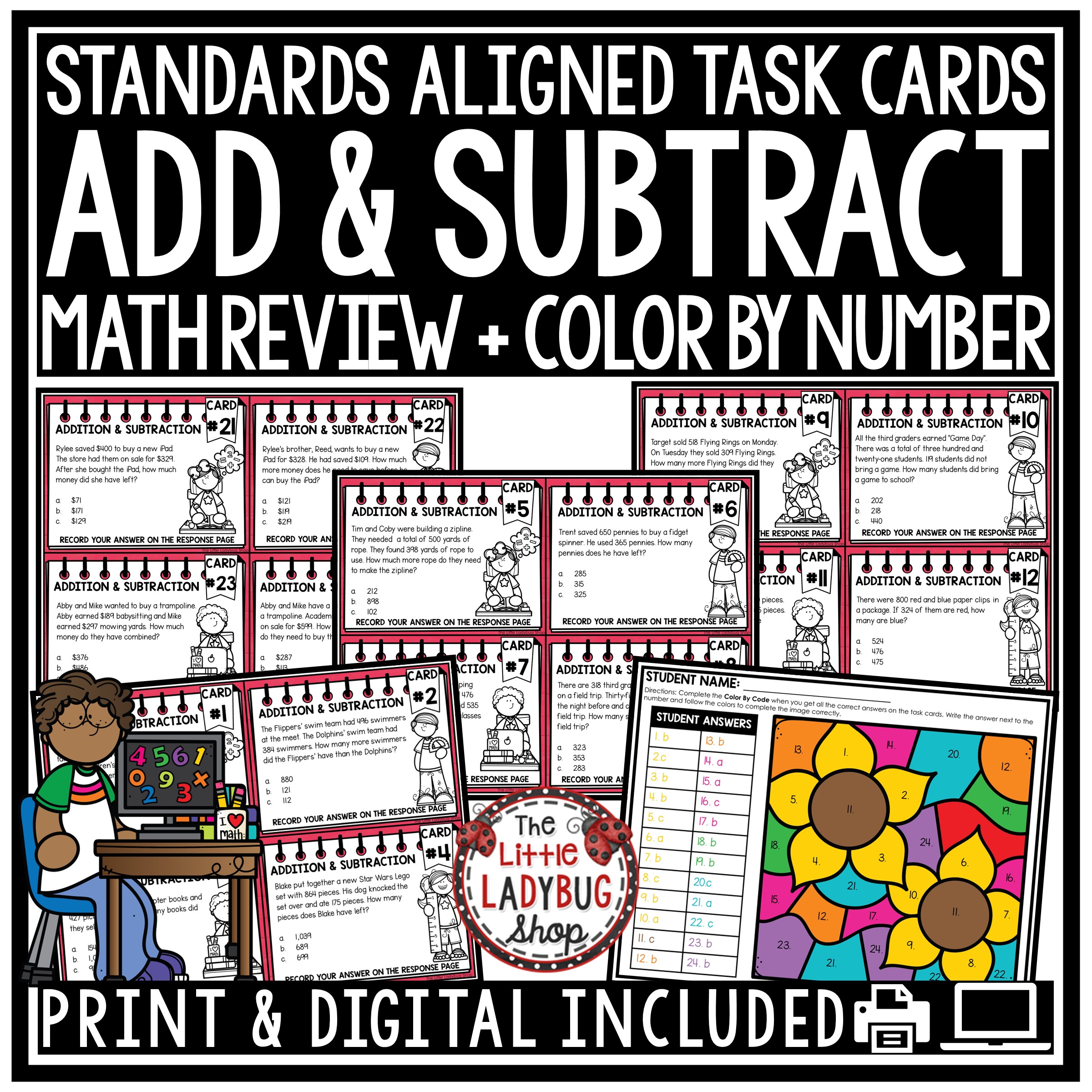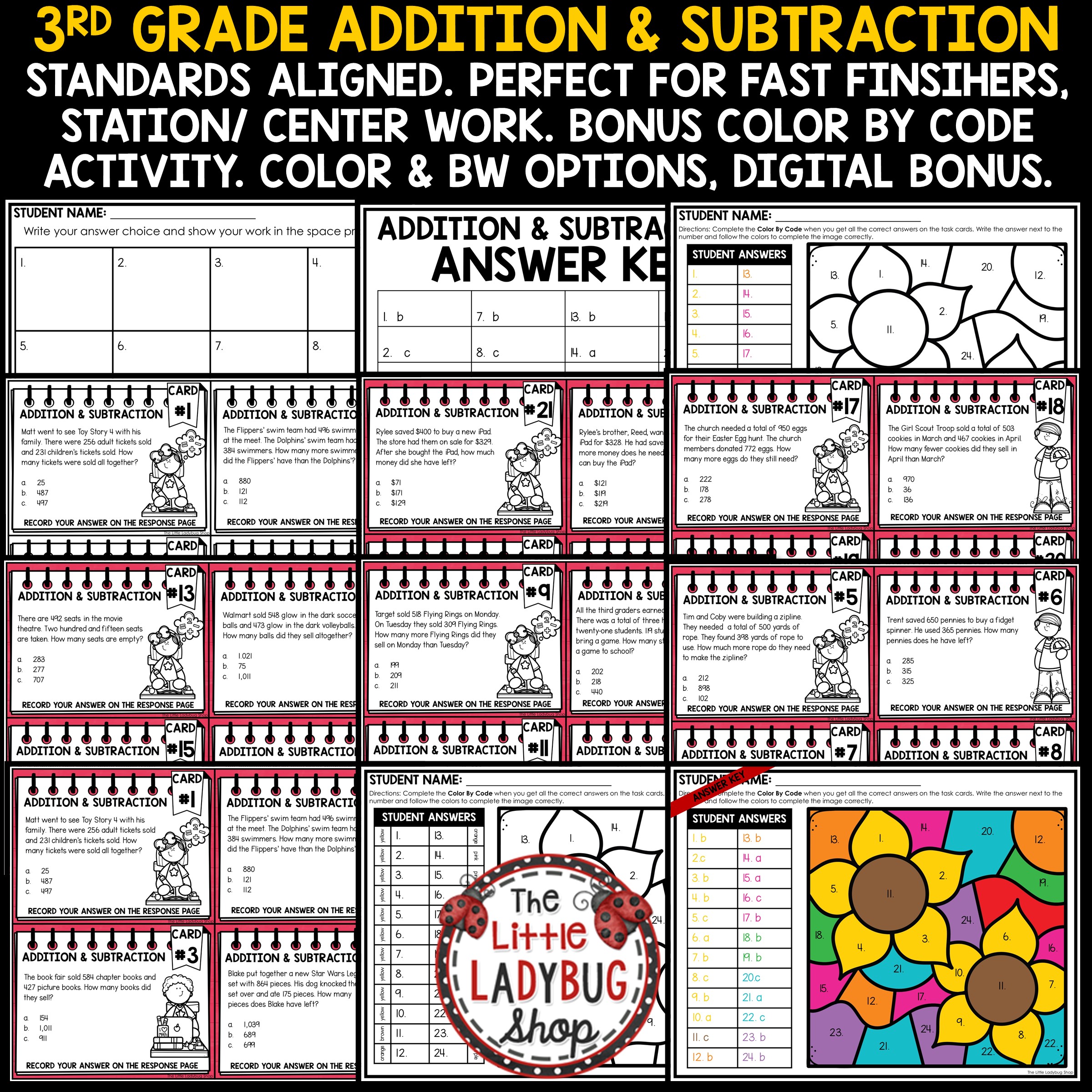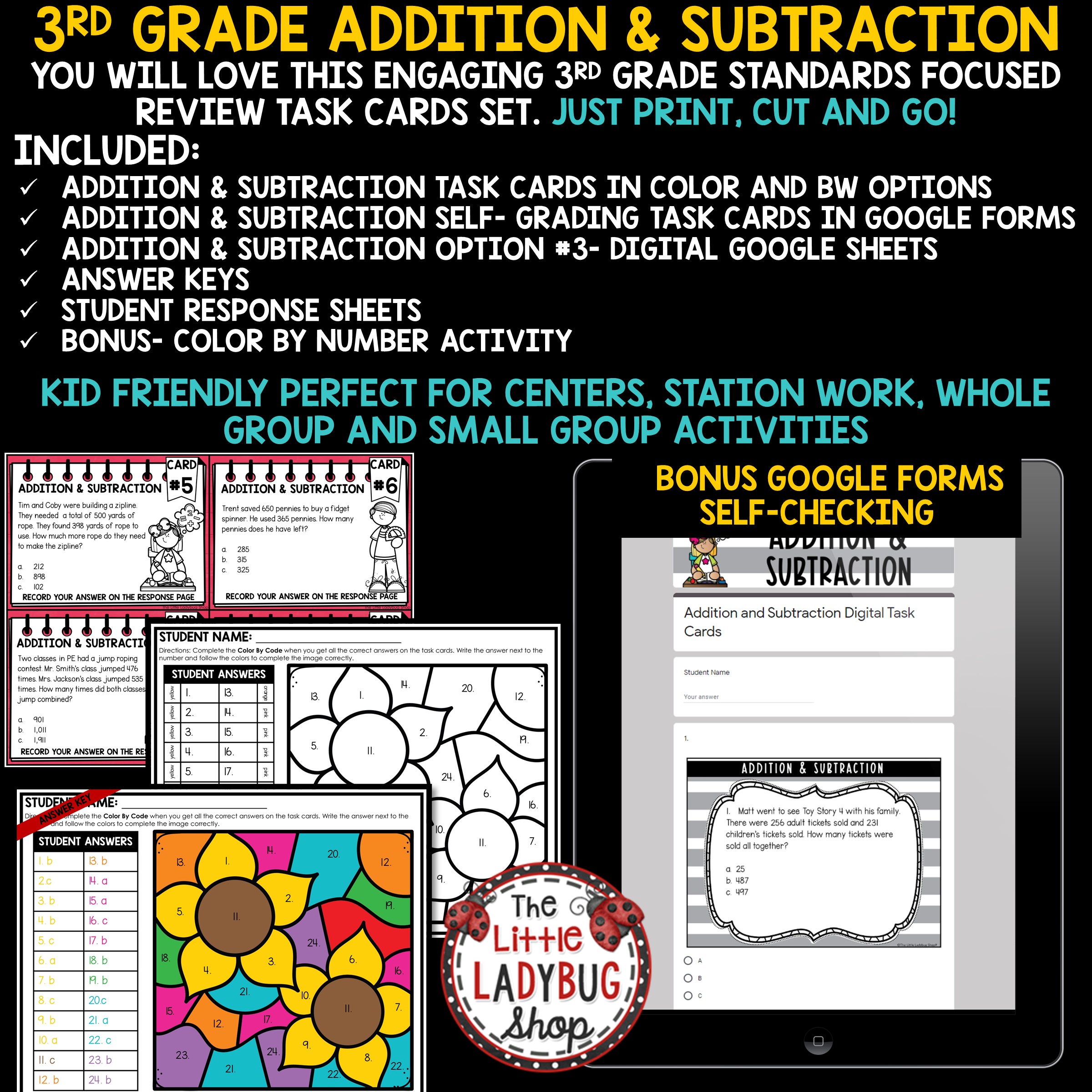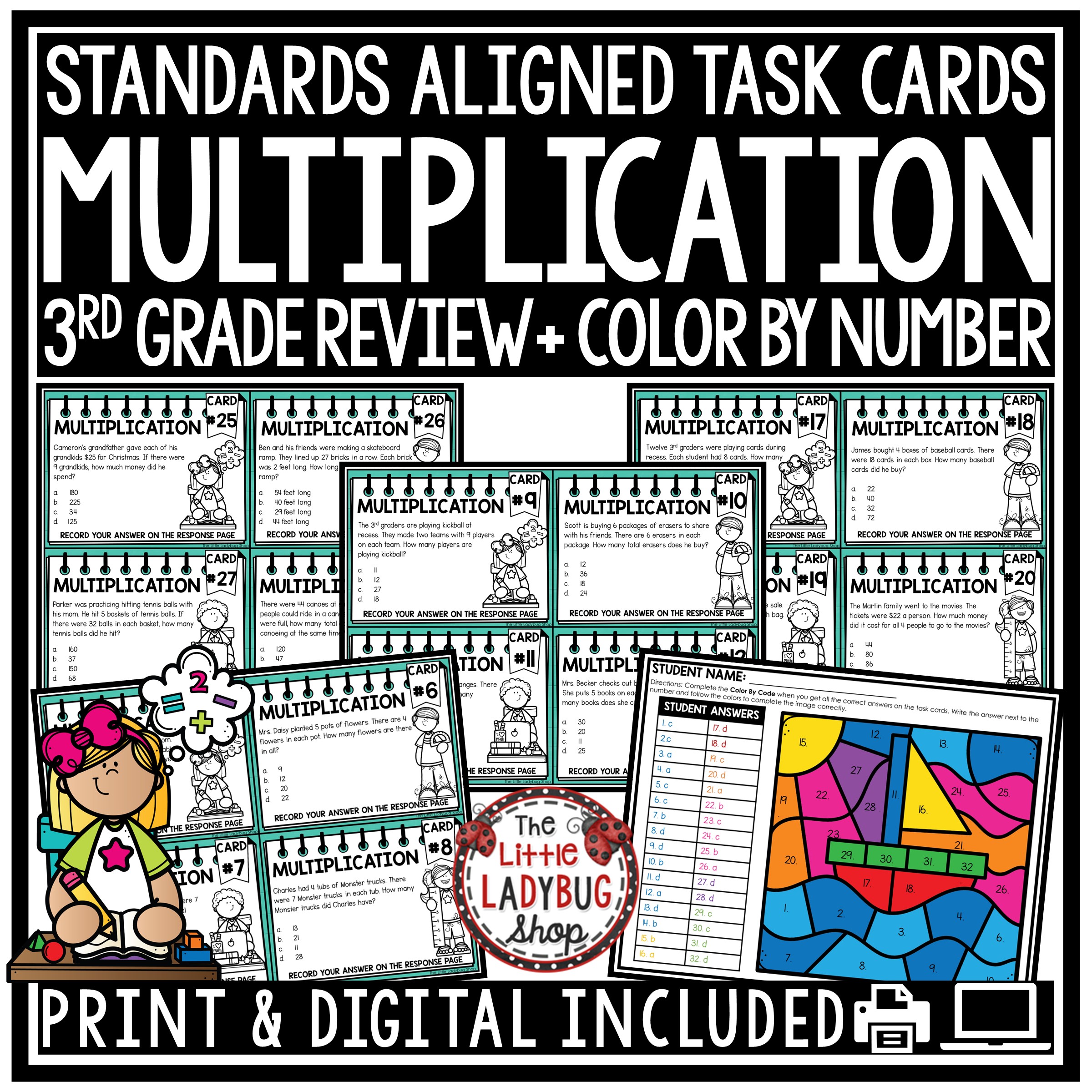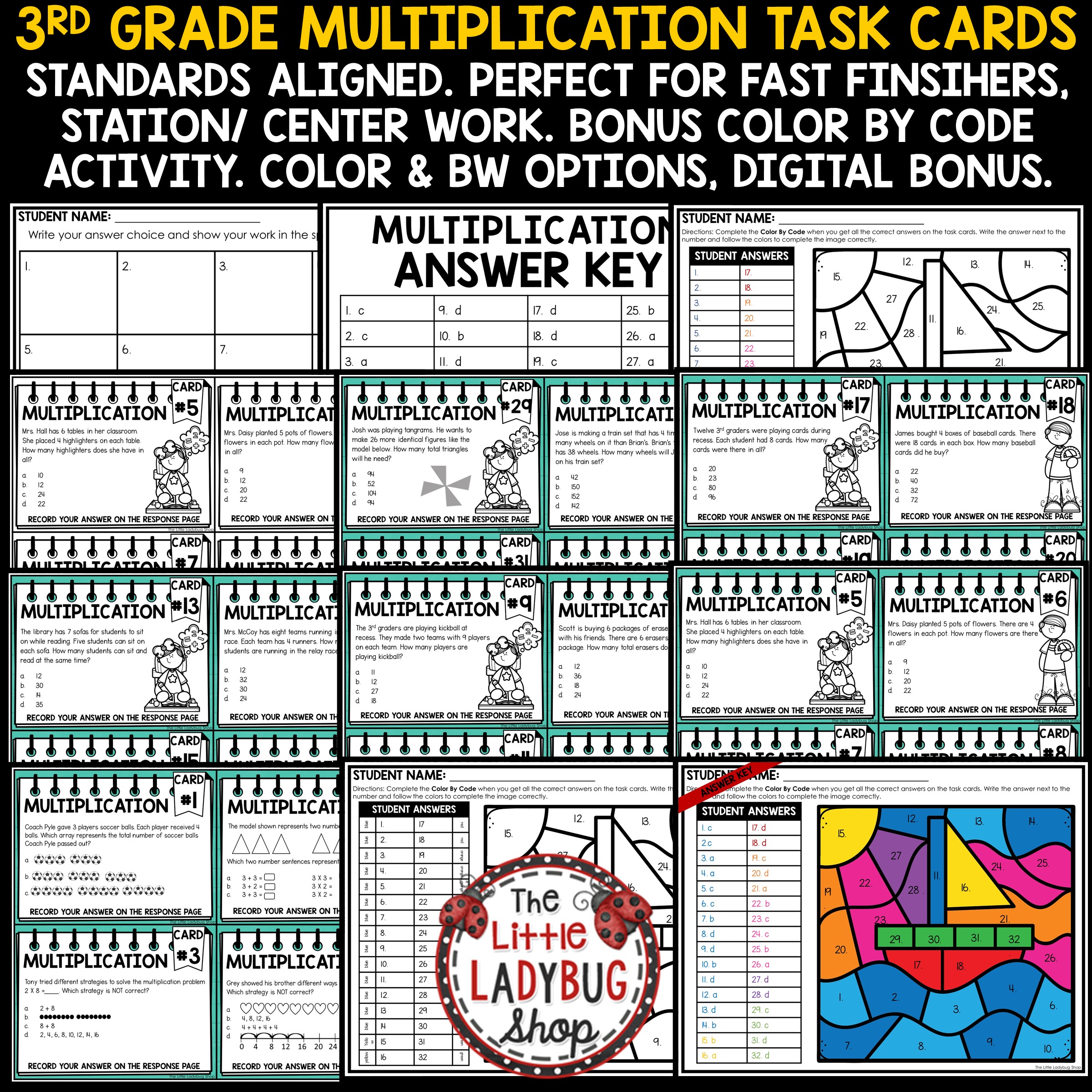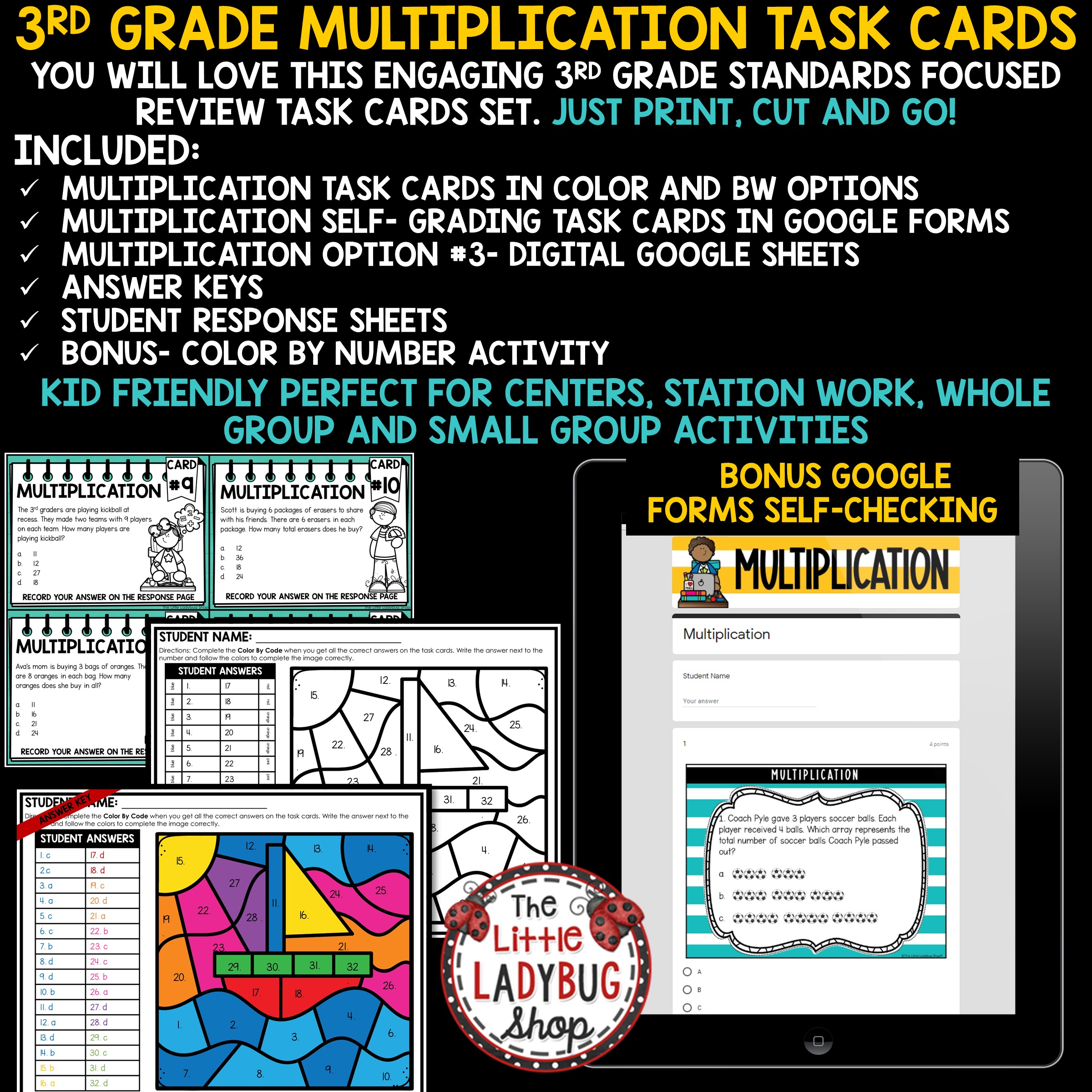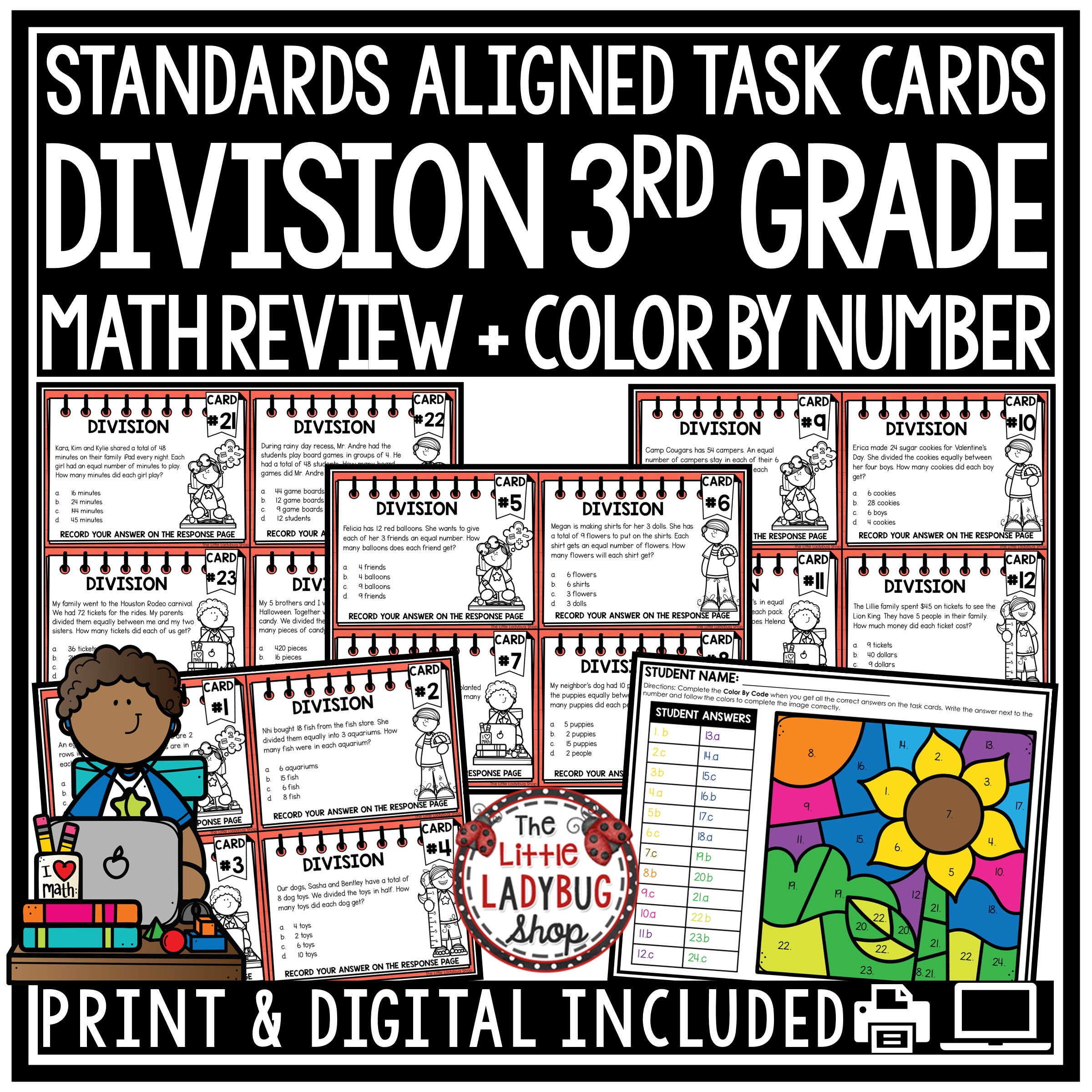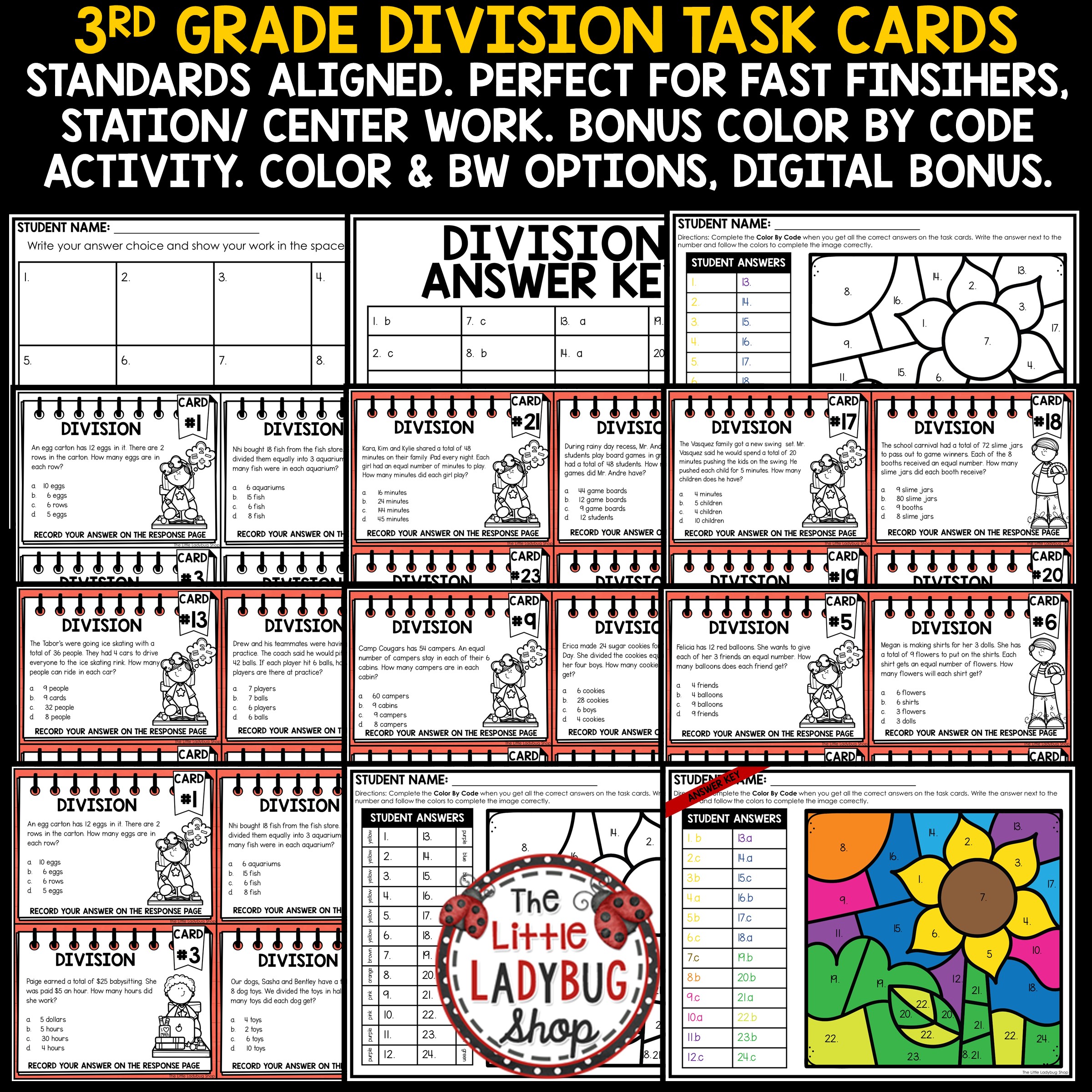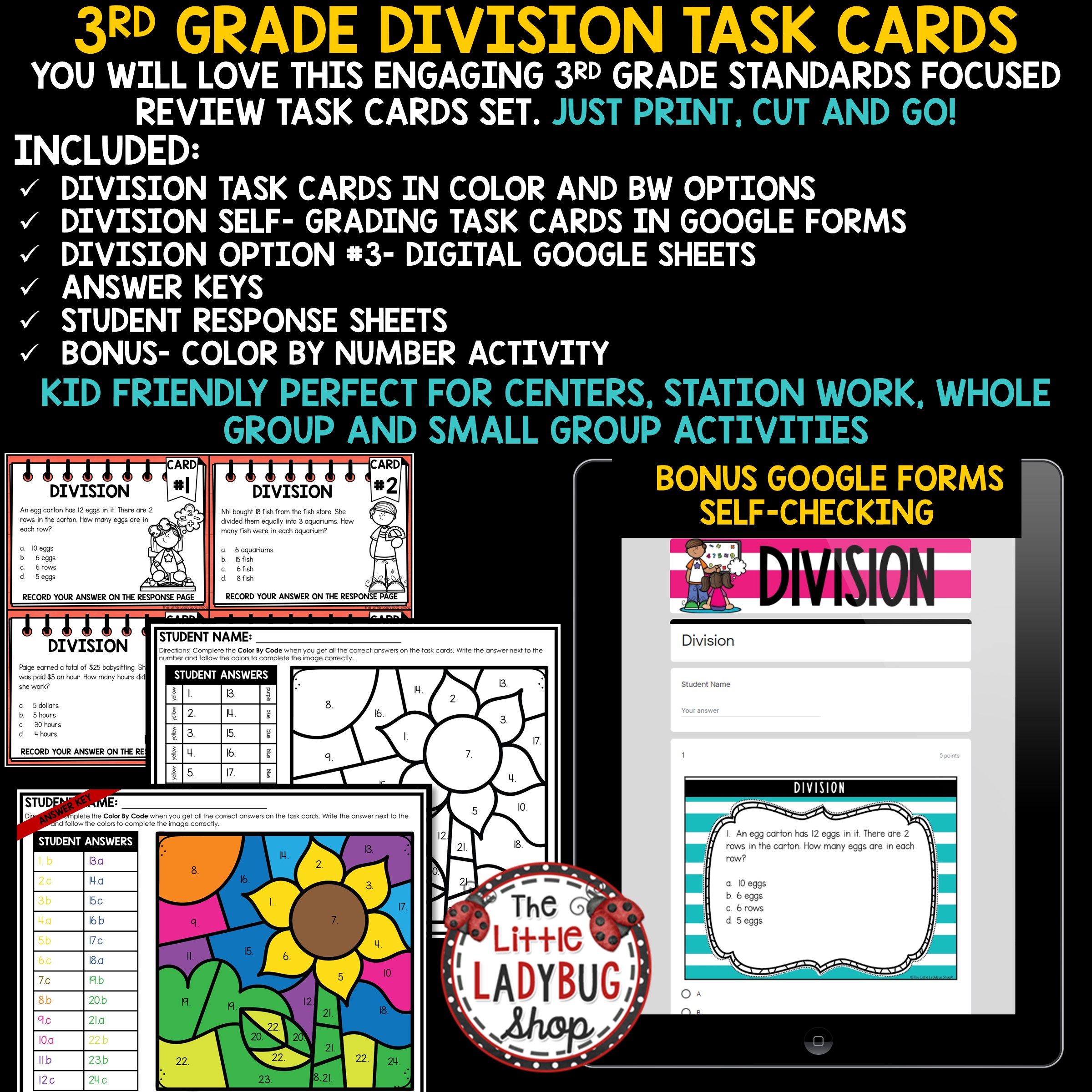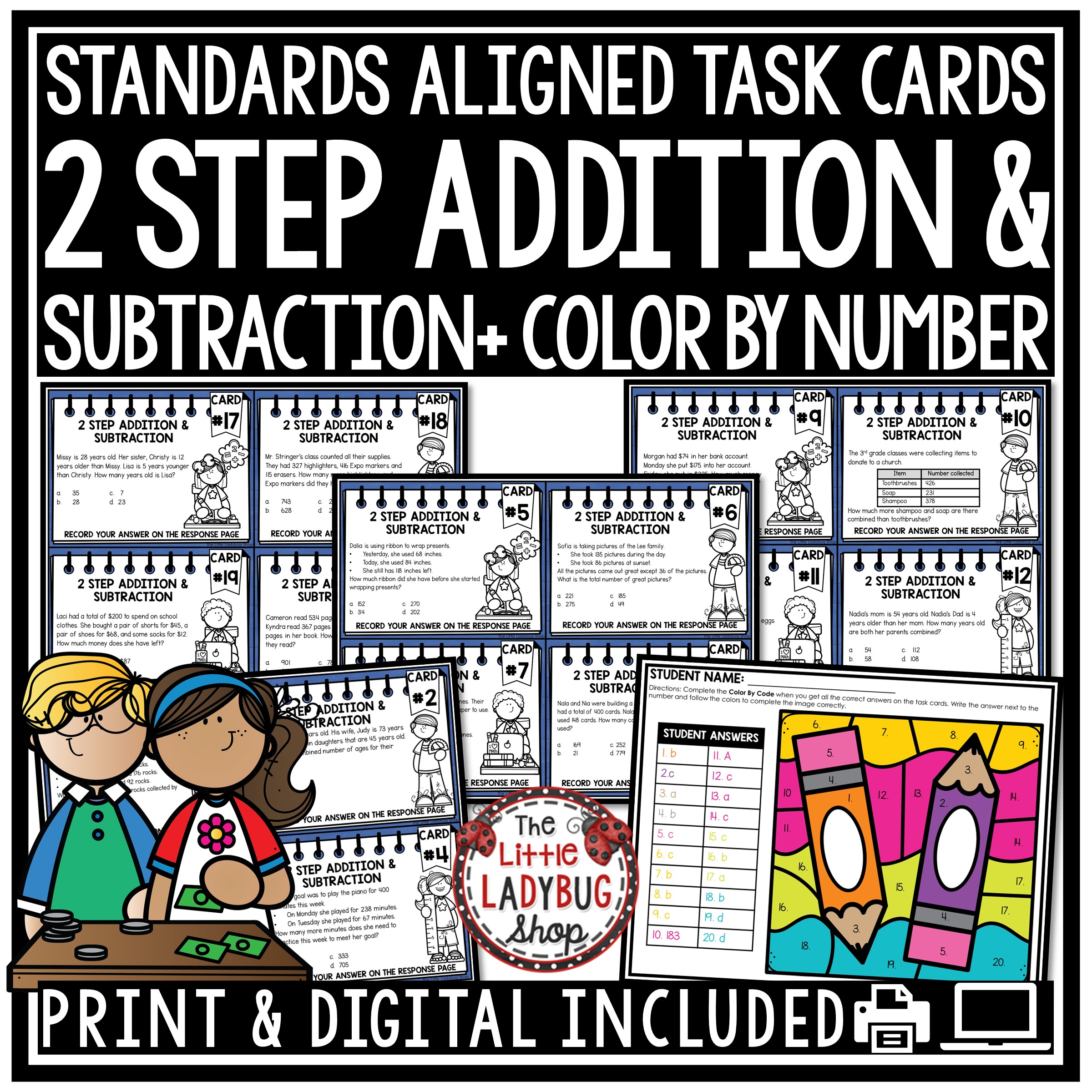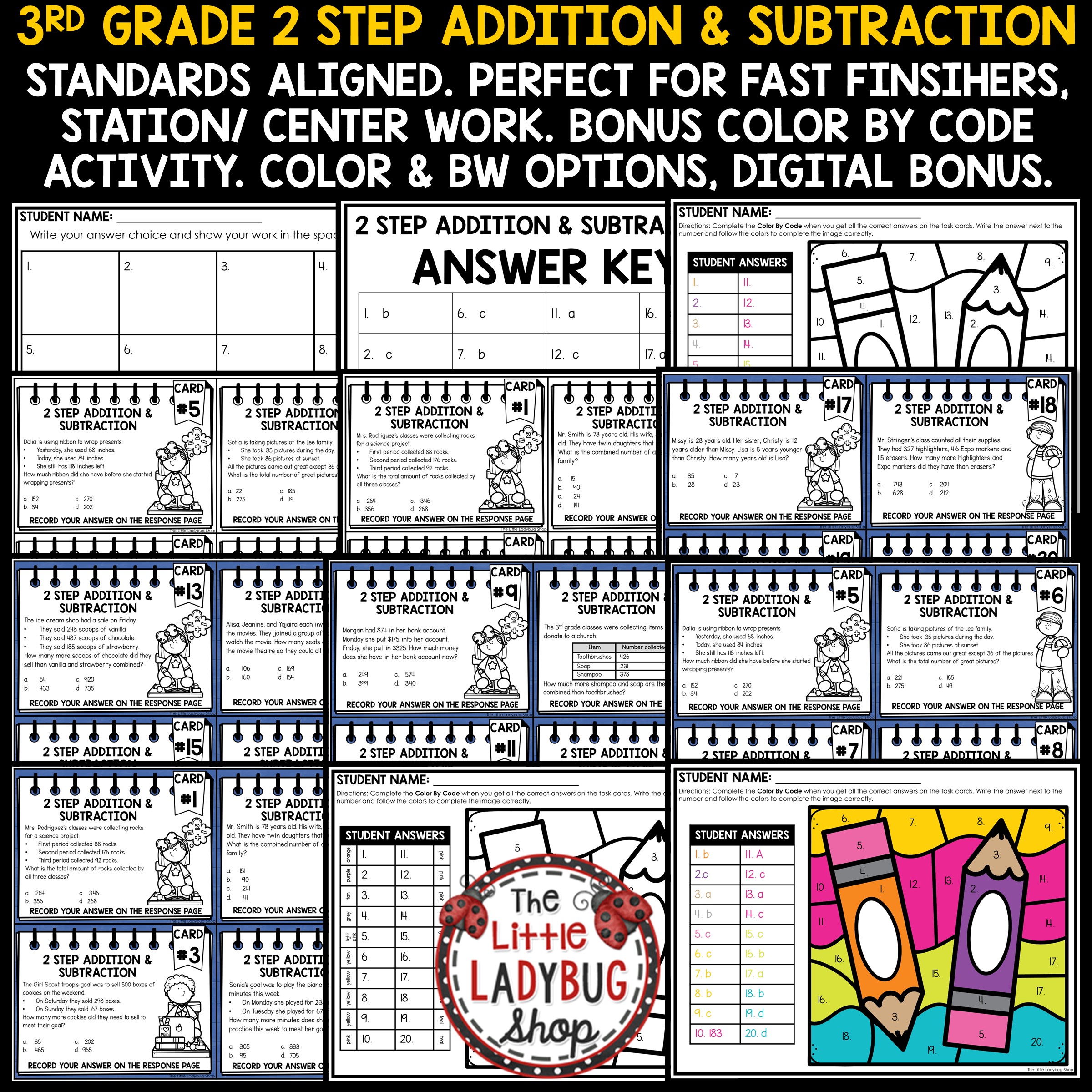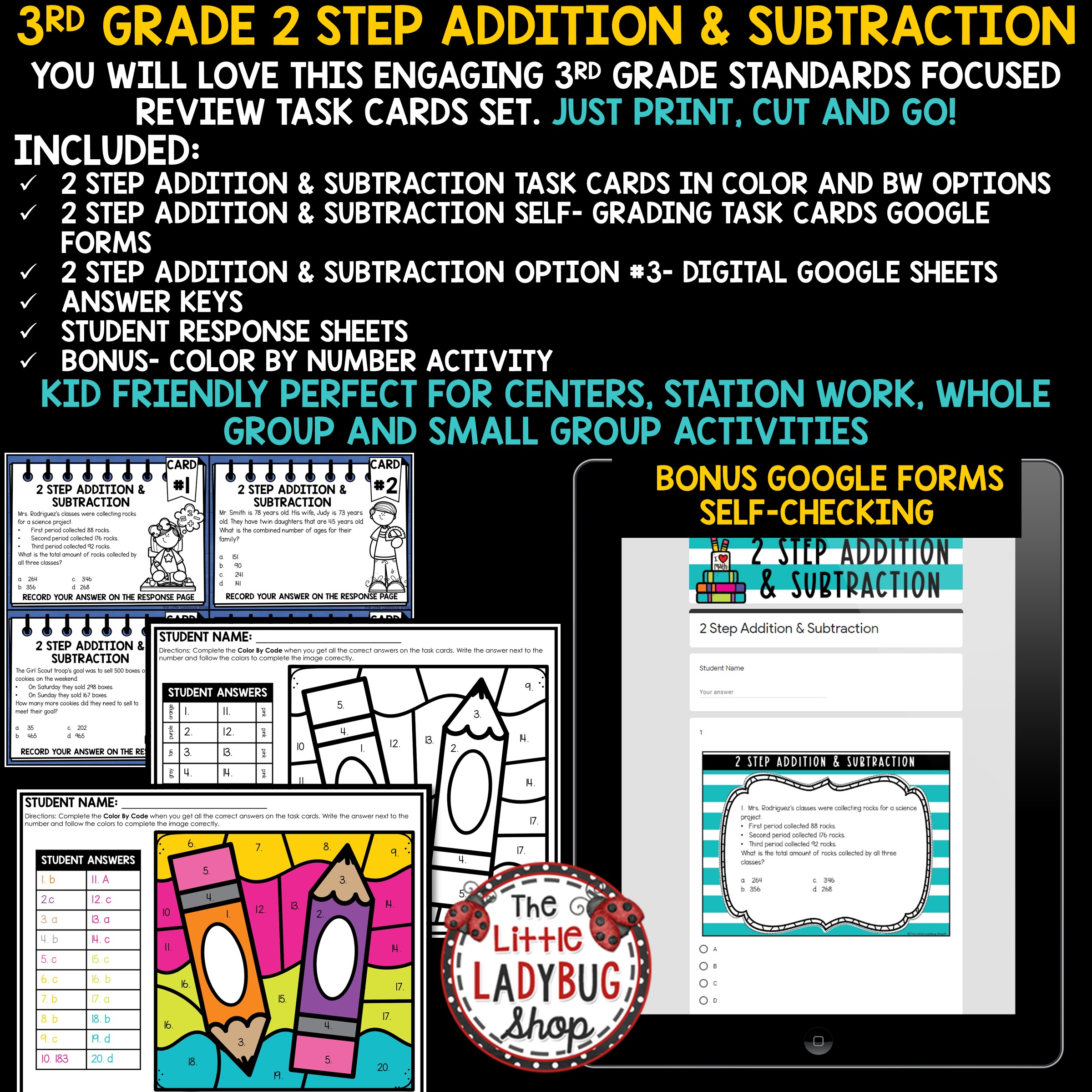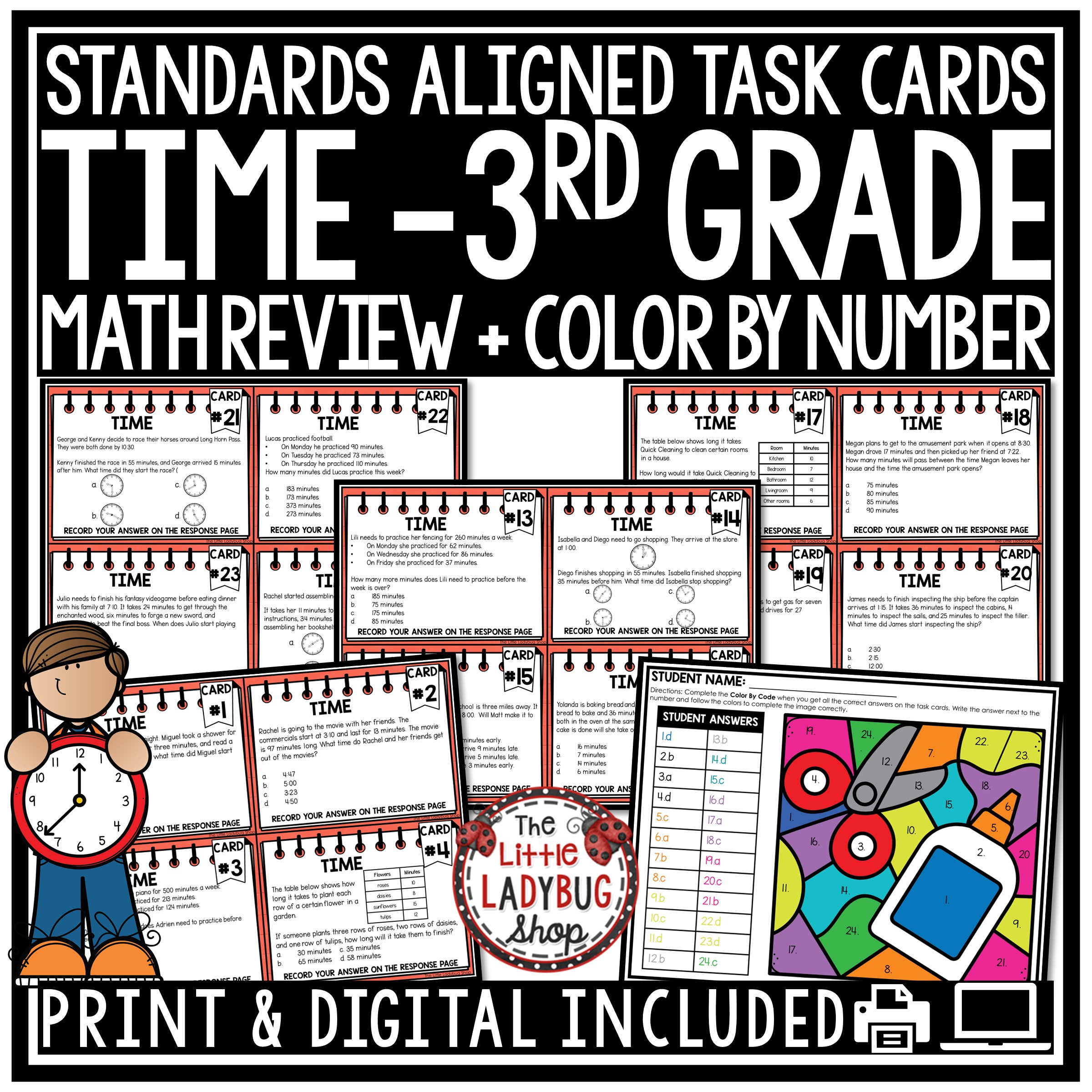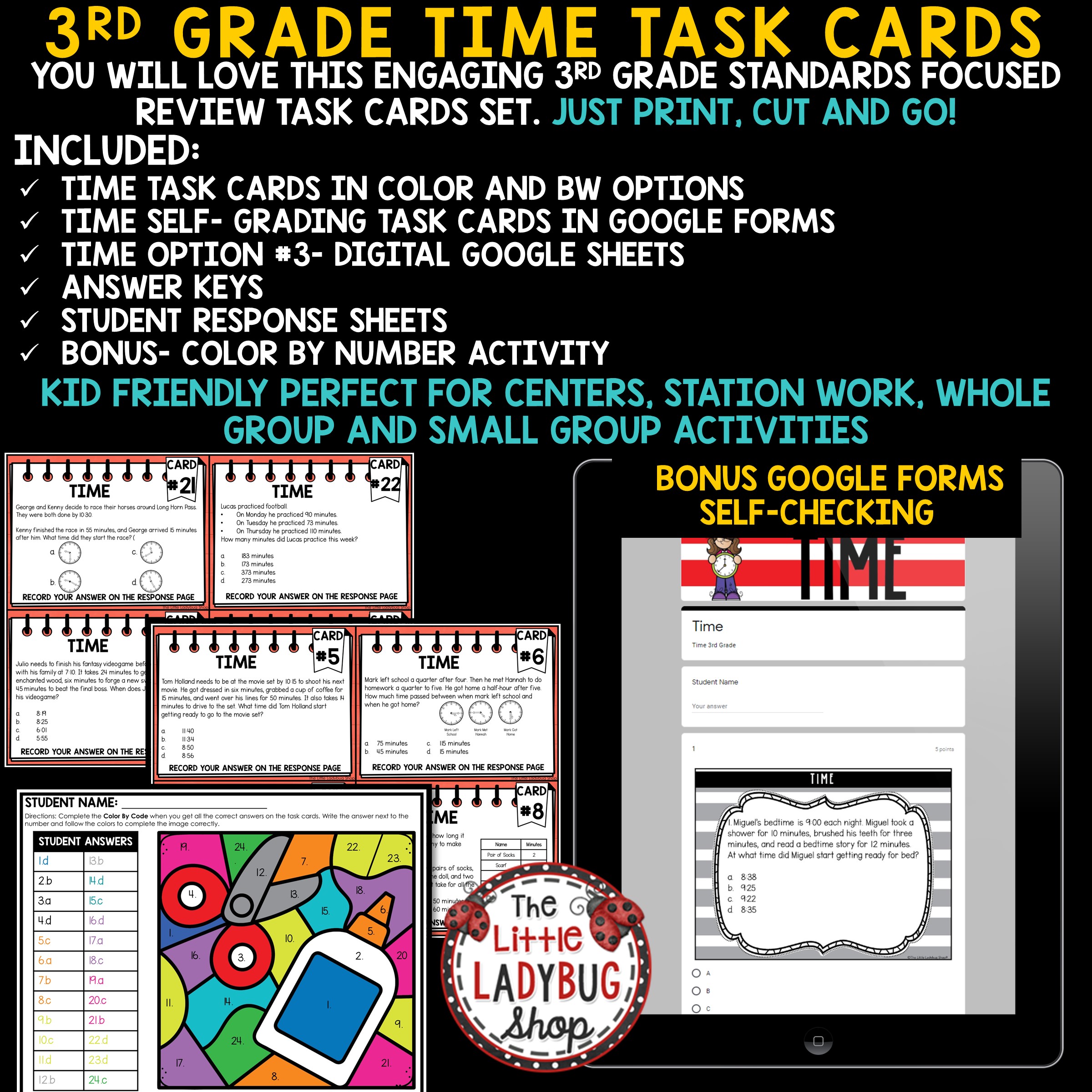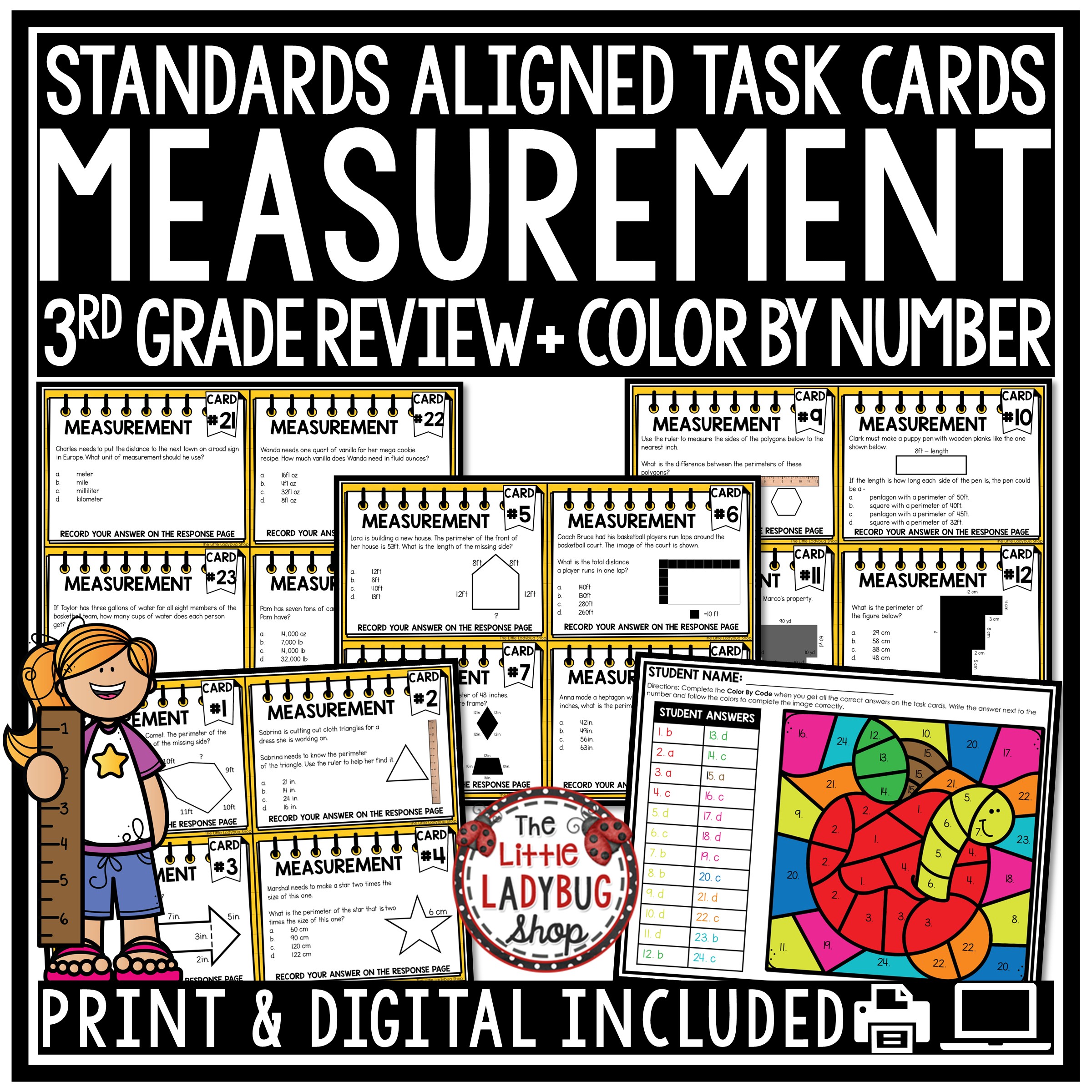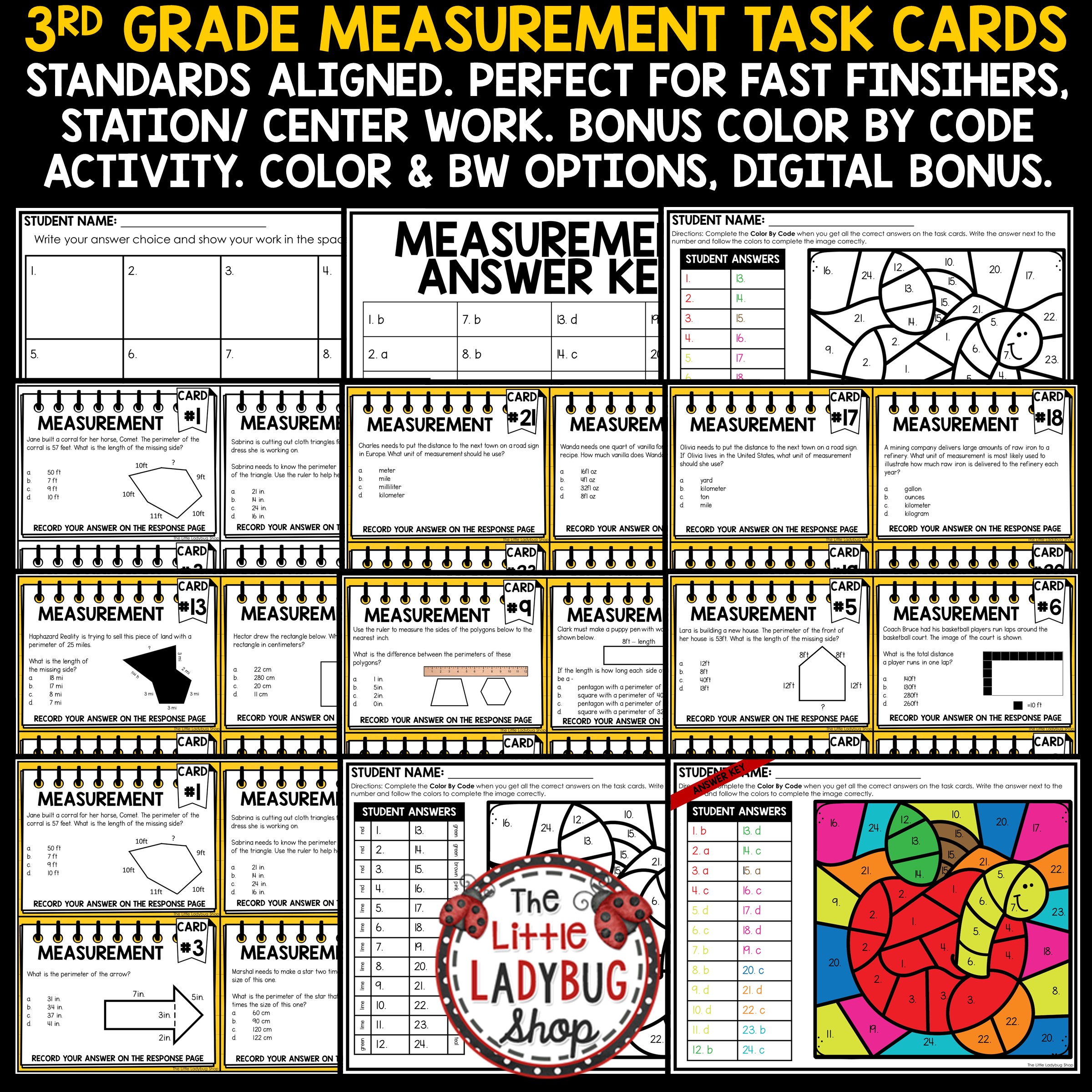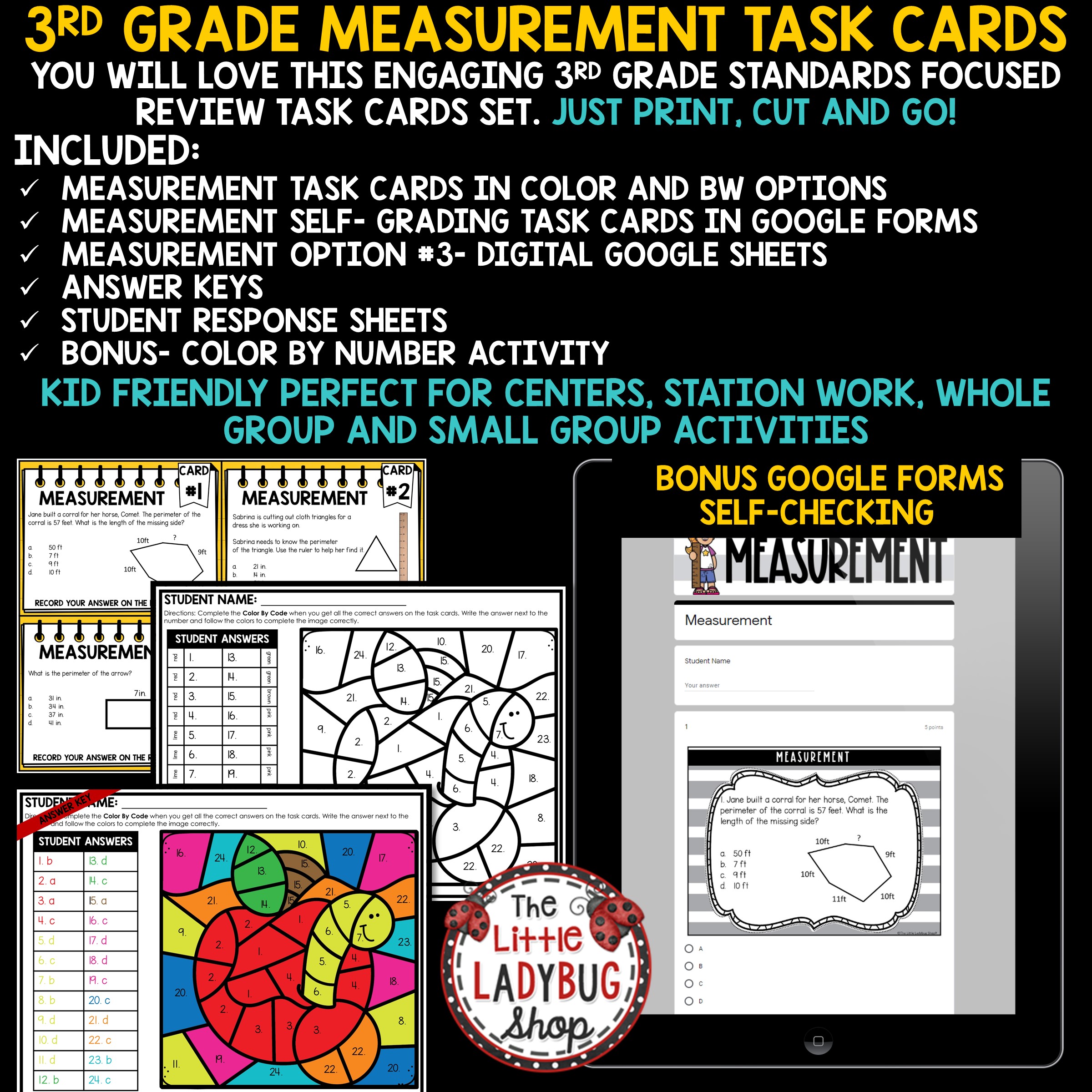Description
Grow your students with these engaging 3rd Grade Math STAAR Test Prep Problem Solving Task Cards BUNDLE + DIGITAL Self- Grading Task Card Option. These task cards have been created to support your teaching. Your students will enjoy reviewing the skills through the interactive learning.
INCLUDED:
PERFECT FOR:
- Math Center Activities
- Early Finisher Activities
- Test Prep
- Skill Review
- Scoot Activity
TIPS FOR USING:
- Print all task cards in color, laminate and cut
- Place cards in envelope for storage.
TEKS for 3rd Grade Math STAAR Test Prep Problem Solving:
Mathematical process standards. The student uses mathematical processes to acquire and demonstrate mathematical understanding. The student is expected to: apply mathematics to problems arising in everyday life, society, and the workplace;
Mathematical process standards. The student uses mathematical processes to acquire and demonstrate mathematical understanding. The student is expected to: use a problem-solving model that incorporates analyzing given information, formulating a plan or strategy, determining a solution, justifying the solution, and evaluating the problem-solving process and the reasonableness of the solution;
Number and operations. The student applies mathematical process standards to represent and compare whole numbers and understand relationships related to place value. The student is expected to: compose and decompose numbers up to 100,000 as a sum of so many ten thousands, so many thousands, so many hundreds, so many tens, and so many ones using objects, pictorial models, and numbers, including expanded notation as appropriate;
Number and operations. The student applies mathematical process standards to represent and compare whole numbers and understand relationships related to place value. The student is expected to: describe the mathematical relationships found in the base-10 place value system through the hundred thousands place;
Number and operations. The student applies mathematical process standards to develop and use strategies and methods for whole number computations in order to solve problems with efficiency and accuracy. The student is expected to: solve with fluency one-step and two-step problems involving addition and subtraction within 1,000 using strategies based on place value, properties of operations, and the relationship between addition and subtraction;
Number and operations. The student applies mathematical process standards to develop and use strategies and methods for whole number computations in order to solve problems with efficiency and accuracy. The student is expected to: round to the nearest 10 or 100 or use compatible numbers to estimate solutions to addition and subtraction problems;
Number and operations. The student applies mathematical process standards to develop and use strategies and methods for whole number computations in order to solve problems with efficiency and accuracy. The student is expected to: determine the total number of objects when equally-sized groups of objects are combined or arranged in arrays up to 10 by 10;
Number and operations. The student applies mathematical process standards to develop and use strategies and methods for whole number computations in order to solve problems with efficiency and accuracy. The student is expected to: represent multiplication facts by using a variety of approaches such as repeated addition, equal-sized groups, arrays, area models, equal jumps on a number line, and skip counting;
Number and operations. The student applies mathematical process standards to develop and use strategies and methods for whole number computations in order to solve problems with efficiency and accuracy. The student is expected to: use strategies and algorithms, including the standard algorithm, to multiply a two-digit number by a one-digit number. Strategies may include mental math, partial products, and the commutative, associative, and distributive properties;
Number and operations. The student applies mathematical process standards to develop and use strategies and methods for whole number computations in order to solve problems with efficiency and accuracy. The student is expected to: solve one-step and two-step problems involving multiplication and division within 100 using strategies based on objects; pictorial models, including arrays, area models, and equal groups; properties of operations; or recall of facts.
Geometry and measurement. The student applies mathematical process standards to select appropriate units, strategies, and tools to solve problems involving customary and metric measurement. The student is expected to: determine the perimeter of a polygon or a missing length when given perimeter and remaining side lengths in problems;
Geometry and measurement. The student applies mathematical process standards to select appropriate units, strategies, and tools to solve problems involving customary and metric measurement. The student is expected to: determine the solutions to problems involving addition and subtraction of time intervals in minutes using pictorial models or tools such as a 15-minute event plus a 30-minute event equals 45 minutes;
Geometry and measurement. The student applies mathematical process standards to select appropriate units, strategies, and tools to solve problems involving customary and metric measurement. The student is expected to: determine when it is appropriate to use measurements of liquid volume (capacity) or weight; and
Geometry and measurement. The student applies mathematical process standards to select appropriate units, strategies, and tools to solve problems involving customary and metric measurement. The student is expected to: determine liquid volume (capacity) or weight using appropriate units and tools.
This product is NOT Editable and in English Only. If you have questions do not hesitate in emailing me at: Ladybug Shop Email
PLEASE PREVIEW BEFORE PURCHASING
Thank you for visiting The Little Ladybug Shop. I would love for you to become a follower. The Little Ladybug Shop followers receive new product information and discounts on any new items!
All rights reserved by Jacqueline Ortiz ©The Little Ladybug Shop . This product is to be used by the original downloader ONLY. Copying for more than one teacher, classroom, department, school, or school system is prohibited. This product may not be distributed or displayed digitally for public view. Failure to comply is a copyright infringement and a violation of the Digital Millennium Copyright Act (DMCA). Intended for classroom and personal use ONLY.


